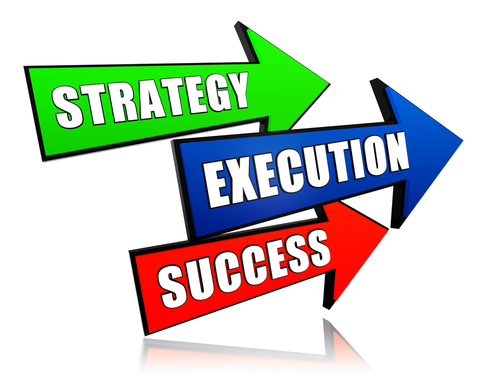The toughest job for any CEO of any sized business is not strategy. It’s not execution. It’s both. How you translate a great strategy into actions that work, is the difficult bit.
Let me help you with this problem by sharing 10 actions I’ve found work:
- Alignment: Ask every manager to write down their three biggest priorities for the quarter and the year. Now, ask yourself, do these align with each other, and do they align with the corporate objectives for the year?
- Meetings: What questions are being answered by each and every meeting? Objectives change, meetings become outdated. New meetings are needed to achieve alignment.
- Talent: Given your strategic plan and the resources you need to execute the plan, what roles are missing from your structure? What roles are under-resourced and therefore exposed? What roles are failing? Now, do you have a clear strategy driven by the HR director to solve all three questions?
- Balance Sheet: Is your balance sheet fit for scaling? Is there a match between the policies you are executing and the cash flow to fuel them? Who is driving the funding gap, if it exists?
- Accountability: For every major company initiative to be executed this year, are you clear who owns it? Have you defined the project in sufficient detail to underpin success? Accountability is key but has the project manager properly scoped all actions needed, resourced the relevant team, justified the final budget, defined how success will be measured, and set realistic deadlines?
- Performance Measurement: Who you are, is what what you measure! Once you have defined your strategy your next task is to define how you will measure success. The granular financial and non-financial metrics that reveal your success and failure. What does a good month look like? Has the finance team truly embraced their roles as investigation journalists, as chief curiosity officers?
- Relentless Execution: One of the issues I see again and again is “follow through”. As in, lack of follow through! That’s what relentless execution means in my book. Doing lots of detailed, sometimes relatively boring things again and again, and following up on actions promised.
- Story Telling: Strategy drives the narrative of the company. Stories matter. Translating that desire into departmental actions is imperative. Building a marketing narrative needs to be anchored in your strategy. The narrative needs to have the customer center stage. It needs to translate the corporate objectives into value achieved for customers.
- Simplicity: Too many small and middle market companies (and large public companies eg Yahoo) come to market with an overly complex message. Often management are trying to support multiple brands, when the most effective strategy would be to build a remarkable business around one brand, one vision, one purpose.
- Market Intelligence: How do you achieve an understanding of your customers needs and your markets? What’s your process for building products and services that are aligned to your strategy and that the market needs? How do you align R&D, product management insights, marketing team assessments and the sales team knowledge?
In summary, successful execution requires an alignment of all your resources with a strategy, that has been insightfully calibrated, to where the market is going.
Want to talk scaling? Reach out Ian@TPPBoston.com.








